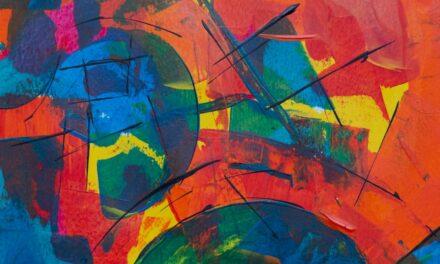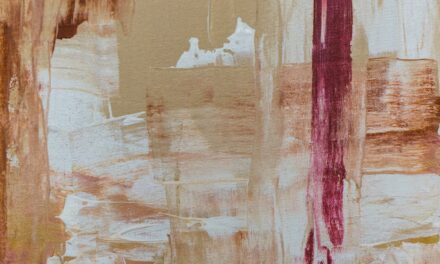Self-expression is a fundamental aspect of human experience, serving as a vital conduit through which individuals communicate their thoughts, emotions, and identities. In the realm of art, self-expression transcends mere aesthetics; it becomes a powerful tool for personal exploration and connection with others. The act of creating art allows individuals to articulate feelings that may be difficult to verbalise, providing a safe space for introspection and emotional release.
This process not only fosters creativity but also enhances mental well-being, as individuals engage in a dialogue with their inner selves.
It empowers individuals to assert their identities and share their unique perspectives with the world.
In this way, art becomes a bridge between the self and society, enabling artists to convey messages that resonate on both personal and communal levels. By understanding the importance of self-expression, we can appreciate how art serves as a mirror reflecting the complexities of human experience, allowing both the creator and the audience to engage in a shared journey of understanding and empathy.
Summary
- Self-expression is crucial for personal development and emotional well-being.
- A supportive environment is essential for nurturing creativity and self-expression.
- Providing a variety of art materials and tools allows for exploration and creativity.
- Encouraging experimentation and risk-taking fosters growth and confidence in artistic abilities.
- Offering positive feedback and validation helps to build self-esteem and motivation.
Creating a Supportive Environment
A nurturing environment is essential for fostering creativity and encouraging self-expression in art. When individuals feel safe and supported, they are more likely to explore their artistic inclinations without fear of judgement or criticism. This supportive atmosphere can be cultivated through various means, such as establishing open lines of communication, promoting collaboration, and celebrating individual contributions.
By creating a space where artists feel valued and respected, we lay the groundwork for authentic self-expression to flourish. In addition to emotional support, a conducive environment also encompasses physical aspects that inspire creativity. This includes providing adequate lighting, comfortable workspaces, and access to diverse artistic resources.
When artists are surrounded by an atmosphere that stimulates their imagination, they are more inclined to experiment with new ideas and techniques. Ultimately, a supportive environment not only nurtures individual creativity but also fosters a sense of community among artists, encouraging them to share their experiences and learn from one another.
Providing a Variety of Art Materials and Tools
The availability of diverse art materials and tools plays a crucial role in facilitating creative expression. When artists have access to a wide range of mediums—such as paints, pastels, clay, and digital tools—they can explore different techniques and styles that resonate with their personal vision. This variety not only enhances the creative process but also encourages individuals to step outside their comfort zones and experiment with unfamiliar materials.
The tactile experience of working with different mediums can ignite inspiration and lead to unexpected artistic discoveries. Furthermore, providing an array of tools allows artists to develop their skills and refine their techniques over time. Each medium presents unique challenges and opportunities for growth, enabling individuals to expand their artistic repertoire.
For instance, working with watercolours may teach patience and precision, while sculpting with clay can foster a deeper understanding of form and texture. By encouraging artists to engage with various materials, we empower them to find their unique voice and express themselves in ways that resonate deeply with their personal experiences.
Encouraging Experimentation and Risk-Taking
Art is inherently about exploration, and encouraging experimentation is vital for nurturing creativity. When artists are given the freedom to take risks—whether through trying new techniques or embracing unconventional ideas—they are more likely to discover their authentic artistic voice. This spirit of experimentation can lead to innovative works that challenge traditional boundaries and provoke thought.
By fostering an environment where risk-taking is celebrated rather than feared, we empower artists to push the limits of their creativity. Moreover, embracing experimentation can lead to unexpected outcomes that enrich the artistic process. Mistakes often serve as valuable learning experiences, guiding artists toward new directions they may not have considered otherwise.
By encouraging individuals to view failures as opportunities for growth rather than setbacks, we cultivate resilience and adaptability in their creative journeys. This mindset not only enhances artistic skills but also instils confidence in artists as they navigate the complexities of self-expression.
Offering Positive Feedback and Validation
Positive feedback is an essential component of nurturing creativity and self-expression in art. When artists receive constructive praise for their efforts, it reinforces their sense of accomplishment and encourages them to continue exploring their artistic pursuits. Validation from peers, mentors, or audiences can significantly impact an artist’s confidence and motivation.
By recognising the effort and intention behind each piece of artwork, we affirm the value of individual expression and inspire artists to delve deeper into their creative processes. In addition to general encouragement, specific feedback can help artists refine their skills and develop a clearer understanding of their artistic voice. Constructive criticism delivered in a supportive manner can guide individuals toward improvement while still celebrating their unique perspectives.
This balance between validation and constructive feedback fosters an environment where artists feel empowered to take risks and grow without fear of harsh judgement. Ultimately, positive reinforcement plays a pivotal role in nurturing a thriving artistic community where self-expression is cherished.
Embracing Mistakes and Imperfections
The Freedom to Experiment
When individuals learn to accept that not every piece will be flawless, they open themselves up to new possibilities and innovative approaches. This acceptance fosters a mindset that values exploration over perfection, encouraging artists to take bold risks in their work.
Breakthroughs from Mistakes
Moreover, acknowledging mistakes as part of the creative process can lead to unexpected breakthroughs. Many renowned artists have created iconic works by embracing what initially seemed like failures or missteps.
Cultivating Resilience and Authenticity
By reframing our perception of mistakes as opportunities for growth, we cultivate resilience in artists and encourage them to view challenges as integral components of their artistic journeys. This shift in perspective not only enhances individual creativity but also fosters a culture that celebrates authenticity and vulnerability in self-expression.
Fostering a Sense of Ownership and Autonomy
A sense of ownership is crucial for empowering artists in their creative endeavours. When individuals feel a personal connection to their work, they are more likely to invest time and energy into the creative process. Fostering autonomy allows artists to make choices about their projects—whether it be selecting themes, materials, or techniques—enabling them to express themselves authentically.
This sense of agency not only enhances individual creativity but also instils pride in their artistic accomplishments. Encouraging ownership also involves recognising the unique perspectives that each artist brings to their work. By valuing individual contributions and allowing artists to take charge of their creative journeys, we create an environment where self-expression thrives.
This empowerment fosters confidence in artists as they navigate their artistic paths, encouraging them to explore new ideas without fear of external judgement.
Celebrating and Showcasing Their Artwork
Celebrating and showcasing artwork is an essential aspect of validating an artist’s efforts and contributions. Whether through exhibitions, online platforms, or community events, providing opportunities for artists to share their work with others fosters a sense of pride and accomplishment. These celebrations not only highlight individual achievements but also create spaces for dialogue and connection among artists and audiences alike.
By showcasing diverse artistic expressions, we enrich our cultural landscape and promote appreciation for the myriad ways in which individuals communicate through art. Moreover, celebrating artwork encourages community engagement and collaboration among artists. When individuals come together to share their creations, they foster connections that can lead to new partnerships and creative ventures.
This sense of community not only enhances individual experiences but also contributes to a vibrant artistic ecosystem where ideas are exchanged freely. By recognising the importance of celebrating art in all its forms, we cultivate an environment where self-expression is cherished and valued as an integral part of our shared human experience.
For parents and teachers looking to inspire young artists, a visit to the National Gallery in London, UK could provide valuable insight and inspiration. This renowned art museum houses an extensive collection of masterpieces from various periods and styles, offering a rich tapestry of artistic expression. By exposing children to diverse works of art, they can gain a deeper appreciation for different forms of self-expression and creativity. Encouraging young artists to explore beyond the canvas and draw inspiration from the world around them can help nurture their artistic talents and foster a lifelong love for art. To learn more about the National Gallery in London, visit this article.
FAQs
What are the benefits of encouraging self-expression in young artists?
Encouraging self-expression in young artists can help them develop their creativity, problem-solving skills, and self-confidence. It also allows them to explore their emotions and thoughts in a healthy and constructive way.
How can parents and teachers support self-expression in young artists?
Parents and teachers can support self-expression in young artists by providing them with a safe and supportive environment, offering constructive feedback, and exposing them to a variety of art forms and materials. It’s also important to encourage them to express themselves without fear of judgment.
What are some practical tips for parents and teachers to encourage self-expression in young artists?
Some practical tips for parents and teachers to encourage self-expression in young artists include providing them with ample opportunities to create art, allowing them to make their own artistic choices, and engaging in open-ended conversations about their artwork. It’s also important to celebrate their unique artistic voice and encourage them to experiment with different techniques and styles.
How can self-expression in young artists contribute to their overall development?
Self-expression in young artists can contribute to their overall development by fostering their emotional intelligence, critical thinking skills, and ability to communicate effectively. It also allows them to develop a sense of identity and self-awareness, which are important for their personal and social growth.


